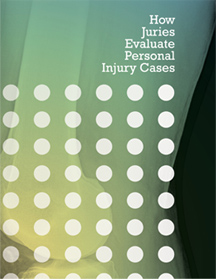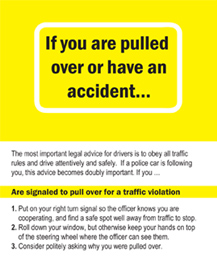Interrogatories to the defendant car owner
Personal injury lawyers investigate things about a lawsuit in a variety of ways. One of these is the pre-trial phase of a lawsuit called “discovery.” In discovery lawyers can request documents and other evidence from the other parties. One of the typical discovery methods is a set of interrogatories, which is a list of questions to the other side.
The following sample interrogatories shows an example of the type of interrogatories that your personal injury lawyer might send to the owner (but not the driver) of the car that hit you.
Sample interrogatories to the defendant car owner
1. State your full name, home address, business address, and occupation.
2. State whether you purchased the motor vehicle at issue in this litigation (hereinafter referred to as "your vehicle") new or used, and specify:
(a) the make, model, and year of your vehicle;
(b) the name and address of the person or company from whom you purchased your vehicle;
(c) the date of purchase;
(d) the mileage at the time of purchase; and
(e) the exact amount of money you paid for your vehicle.3. State whether your vehicle had an inspection sticker or certificate at the time of the accident, and, if so, identify the following:
(a) the date on which such sticker or certificate was issued;
(b) the person or company which issued such sticker or certificate; and
(c) the nature of any repairs which were required as a condition to the issuance of such sticker or certificate, whether such repairs were completed, and the name and address of the person completing such repairs.4. If your vehicle did not have an inspection sticker or certificate at the time of the accident, give the reasons why.
5. Give a description and location of the alleged damage to your vehicle and specify:
(a) the mileage at the time of the accident;
(b) its value immediately before and after the accident;
(c) the cost of repairing any damages;
(d) if any damages were repaired, the name and address of the repairer; and
(e) if you obtained an estimate or appraisal of the damage, the name and address of the person(s) who prepared this estimate or appraisal and the date when this estimate or appraisal was made.6. Give the name and address of the person operating your vehicle at the time of the accident.
7. With reference to interrogatory #6, state whether the operator had your consent and/or permission to operate your motor vehicle. If the answer is in the negative, state why the operator was operating your vehicle. If the answer is in the affirmative, describe the basis and scope of such consent or permission.
8. If you have received any compensation or payments, in full or partial settlement of any claim arising out of the accident, from any person, firm or company, specify:
(a) the name and address of the person, firm or company from whom you received such compensation or payments;
(b) the date when any such compensation or payments were received;
(c) the amount of any such compensation or payments;
(d) the identity of any documents you submitted to the person, firm or company from whom you received such compensation or payments; and
(e) the identity of any covenant, release or discharge existing in respect thereof.9. Identify by name and address any individual you plan to call at the time of trial as an expert witness and for each specify:
(a) the subject matter he is expected to testify on;
(b) the substance of the facts and opinions he is expected to testify to; and
(c) a summary of the grounds for each opinion.10. How many times had the operator of your vehicle driven your vehicle before the date of the accident?
11. State whether you gave any specific instructions to the operator of your vehicle before making the vehicle available to him.
12. If your answer to interrogatory #11 is in the affirmative, state in specific detail, the nature of any instructions you gave to the operator.
13. List all actions you took to determine that the person operating your vehicle was capable of doing so in a safe manner on the date of the accident.



